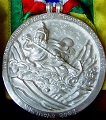
|
The Sir Edmund Hillary Mountain Legacy MedalHome Update Background Nomination Mountain Legacy Collaborate Sitemap Contact |
 |
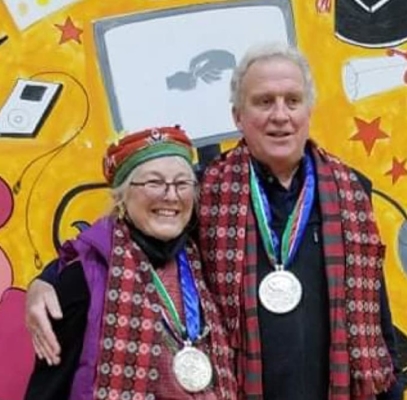
Cornell University anthropologists David Holmberg and Kathryn March received the 2021 Sir Edmund Hillary Mountain Legacy Medals at a ceremony held on December 11, UNESCO's International Mountain day, at the Southside Community Center in Ithaca NY.
Nepal's Consul General Bishnu Gautam, Ithaca Mayor Svante Myrick, and anthropologist Alfred Pach III were guests of honor at an emotional gathering of friends and colleagues to celebrate the contributions of two eminent Cornell anthropologists. In recognition of the honorees' contributions to US-Nepal relations, Mayor Myrick and Consul General Gautam chose this occasion to announce the launch of a Sister Cities program linking Ithaca with Pokhara, Nepal.
Southside Community Center, the site of this year's Hillary Medal presentation, is an iconic institution, the flagship of diversity and inclusiveness efforts in Tompkins County; it is located on South Plain Street, just a few yards away from the historic St. James African Methodist Episcopal Church, a stop on the Underground Railroad route for fugitive slaves, and a local, state and national landmark.
A day earlier, on December 10, a symposium had been held by Cornell's Department of Anthropology, both to honor the achievements of David March and Kathryn Holmberg and to promote research, adventure and volunteer work in Nepal. (More about this event will be posted soon.)
Good afternoon. Welcome to the 2021 Hillary Medal presentation event. My name is Seth Sicroff, and my wife Empar is seated on your right. I think some of you know my daughters Gabriela and Liana, who for many years participated in the Southside after-school program under Petula McBean; this is where they got early experience with essential life skills such as computer coding, break-dancing, and cleaning up your mess.
We’ve also spent quite a few hours here with several generations of Irish Wolfhounds, taking advantage of the dog clinic run by Cornell Veterinary School every other Wednesday. And we have enjoyed the dynamic spirit brought to this neighborhood by a long series of Southside festivals, especially Juneteenth.
When we needed a venue to present our Medal, Southside Community Center was our first choice, precisely because Southside is a leader in grass-roots programs that foster pride and empowerment among individuals within a diverse community. Southside values are the same that we in Mountain Legacy hope to bring to our projects, and they certainly are those that our Hillary Medal recipients have brought to their work.
So, before we get into our award presentation, I want to thank the folks who have made it possible, especially Executive Director Chavon Bunch, gatekeeper Fern Morgan, and President of the Board of Directors Dr. Nia Nunn.
Now, as a local Ithacan who happens to be a member of Mountain Legacy International, the non-profit that administers the Sir Edmund Hillary Mountain Legacy Medal, I have the honor of introducing our President, Dr. Kumar Prasad Mainali, who will give you a brief explanation of the award we are presenting today. Dr. Mainali is a biologist working with the Chesapeake Conservancy, and a leading expert in the field of Artificial Intelligence, which is becoming increasingly important in our efforts to stabilize and sustain diversity and climate on Planet Earth.
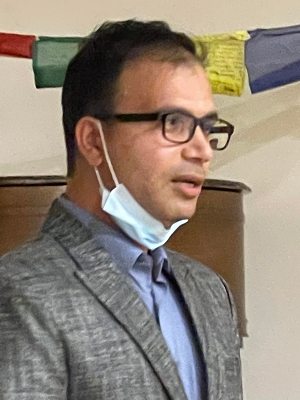
Today we will be presenting the 2021 Sir Edmund Hillary Mountain Legacy Medal to two eminent Cornell anthropologists. But before we do, I’d like to say a few words about the award itself.
The Hillary Medal has a double purpose. First, it honors someone – or occasionally two people – for outstanding contributions on behalf of mountain landscapes, ecosystems, and/or communities. Secondly, it honors the legacy of Sir Edmund Hillary.
There was a time when Sir Edmund Hillary was without doubt the most famous person in the world – a celebrity more famous than Muhammed Ali, Donald Trump and the Kardashians, all rolled into one. That was due to the fact that he and Tenzing Norgay were the first people to climb Mt Everest, which was regarded as the greatest physical achievement in history. Until they reached the summit, no one even knew whether humans could survive at that elevation.
However, the Sir Edmund Hillary Mountain Legacy Medal is not about mountain climbing. Rather it honors Hillary’s service on behalf of the communities in the remote mountainous area around Mount Everest. Actually, this area is not so remote these days, but that is due in great part to Hillary’s efforts. Over a period of four decades, starting in 1961, he built thirty schools, two hospitals, three airstrips, and multiple bridges and water supply systems. He also implemented reforestation programs and played a key role in the creation of Sagarmatha National Park, which UNESCO subsequently designated as a cultural and physical World Heritage Site. On behalf of World Book Encyclopedia, he carried out scientific research on high altitude physiology and adaptation as well as on the yeti. And, incidentally, he delivered and personally injected thousands of doses of smallpox vaccine to squash an epidemic that would otherwise have decimated the local population, and could have spread throughout the country.
All in all, the importance of Edmund Hillary’s legacy on the development of tourism in Nepal cannot be overstated. The trajectory of his career from adventurer to researcher to grassroots development facilitator is the inspiration for the Sir Edmund Hillary Mountain Legacy Medal. In 2002, Sir Edmund personally authorized the creation of this prize, and the first medal was given in 2003.
The Medal itself was designed by a famous Tibetan artist, Tenzin Nurbu, who lives in the Dolpo region of Nepal. His work is owned by many of the most prestigious museums in the world, including Cornell’s Johnson Museum. We hope you’ll take a close look at it, because it is an incredibly beautiful work of art.
Our first Guest of Honor is Mayor Svante Myrick, a man who literally requires no introduction in this town. However, as there are people who have traveled here from distant places, I will only mention that Svante was elected to Ithaca’s Common Council at the age of 20, while he was an undergrad at Cornell, and became Ithaca’s youngest mayor at the age of 24. He is regarded as one of the more innovative and progressive politicians in America, and no one will be surprised if he is elected President one of these days.
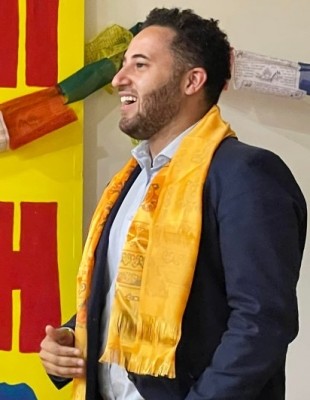
WHEREAS our planet Earth and our community, the City of Ithaca NY, are both luminous ecosystems presenting myriad opportunities for exploration, investigation, commercial enterprise, and recreation as well as daunting challenges for sustainable stewardship and development; and
WHEREAS Sister Cities International, created in 1956 by Dwight D. Eisenhower, is an organization dedicated to the promotion of peace through the facilitation of long-term and broad-based bonds between communities with shared interests and diverse locations, resources, and traditions, by enhancing the catalytic power of people-to-people interaction through mutual respect, understanding and cooperation; and
WHEREAS Ithaca NY and Pokhara, Nepal, share an array of basic characteristics, including exceptionally scenic lakeside landscape; multiple prestigious institutions of higher education; diverse and tolerant populations; important tourism and agricultural sectors; and
WHEREAS Ithaca and Pokhara both serve as gateways to recreational regions, Ithaca to the Finger Lakes, renowned for its spectacular state parks, featuring magnificent gorges and waterfalls; world class wine and beer producers as well as fine dining in an exceptional variety of cuisines; auto racing, marathons, regattas, and other sporting events; and public illuminations and diverse events and celebrations; and Pokhara to the Annapurna Area Conservation Project, the most visited mountaineering and trekking area in a country that is itself synonymous with mountain tourism, as well as to multiple trailheads of the Great Himalayan Trail, the new transboundary trekking route encompassing the 1500-mile arc of the Himalayas and destined to be one of the world’s premier outdoor challenges; and
WHEREAS both Ithaca and Pokhara offer the advantage that, as partners, they provide a multiplier effect on account of long-established academic, commercial, political, and organizational linkages with other urban centers as well as numerous smaller municipalities, an advantage that will be greatly enhanced by the forthcoming expansion of both local airports to handle international flights, so that in establishing a privileged relationship with Pokhara, Ithaca will be effectively bonded with the entire nation of Nepal;
WHEREAS linkage with Pokhara, and through it Nepal, will motivate educational exchanges for Ithaca’s high school students and research opportunities for university students; enhance recreational and cultural tourism through pre-travel contacts so that short-term adventures are more likely to generate lifelong friendships and to facilitate entrepreneurial ventures; and
WHEREAS there are already long-standing ties between Ithaca and Nepal, including numerous Nepalese students enrolled in our universities; a Nepal studies at Cornell that is widely recognized as one of the best in the world; numerous veterans of Peace Corps service in Nepal; Namgyal Monastery, the Western Hemisphere seat of the Dala’i Lama, in which many of the revered residents are Nepalese citizens; several active non-profit corporations, including Educate the Children and Mountain Legacy International; and a sizable community of Nepalese immigrants and exchange scholars; and
WHEREAS numerous individuals and entities have already expressed interest in pursuing the opportunities that will arise from the linkage of Ithaca with Pokhara, including students, teachers, and principal of Ithaca High School; the Cornell Outing Club; various Cornell professors and administrators; and
WHEREAS sister city relationships predictably inspire educators to feature learn about distant partners in social studies curricula and present opportunities for exchange of cultural programs and performances, the result being familiarity with, understanding of, and affection for distant persons and communities; and
WHEREAS Mayor Man Bahadur GC and other leading citizens of Pokhara have expressed enthusiasm for the implementation of a productive accord with Ithaca; and
WHEREAS President Jimmy Carter wrote about his visits to Nepal, "This extraordinary part of the world faces many challenges. But it also has magic. As you trek through the Himalaya, I hope that you are as indelibly impressed as I have been that the people, the environment, and the culture are deserving of our attention and care";
NOW THEREFORE BE IT RESOLVED that Ithaca NY and Pokhara, Nepal, should be recognized as Sister Cities under the terms of and with the objectives prescribed by Sister Cities International.
His Excellency Bishnu Prasad Gautam, acting Consul General of Nepal is a career diplomat with a broad range of experience in the fields of bilateral and multilateral diplomacy, economic diplomacy, education, cultural and consular affairs. He has a Masters degree in English literature and a second Masters in Political Science, both from the prestigious Tribhuwan University in Kirtipur, Nepal. He joined the Foreign Service of Nepal in 2006 and has served in Pretoria (South Africa) and Tel Aviv (Israel) as well as in New York City. We are grateful that he has been able to join us here at Southside for this celebration.
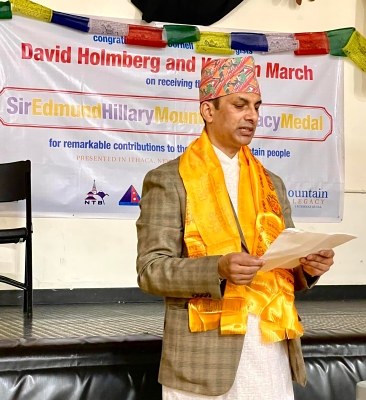
President of the Mountain Legacy International Dr. Kumar Mainali, Distinguished Board of Directors and Mountain Legacy Officials, Honourable Mayor of Ithaca Svante L. Myrick, elected officials, Distinguished Professors, Scholars, Community Members, Mountaineers, Conservationist, Distinguished Guests, Ladies and Gentlemen,
Namaste and Good evening!
I am pleased to join you all with you all in this beautiful and touristic city, Ithaca.
I would like to thank the Mountain Legacy International, its President and Board of Directors for organizing this important event and their kind invitation to me. I also thank CEO of Mountain Legacy and Director of Edmund Hillary Mountain Legacy Medal Project Dr. Seth Sicroff for his kind coordination and updates.
On behalf of the Consulate General of Nepal, and on my own, I congratulate the distinguished Professors Dr. David Holmberg and Dr. Kathryn March for being awarded with the prestigious Sir Edmund Hillary Mountain Legacy Medal, today.
In my view, the beauty of this recognition and the medal truly reflects the contribution of the Professors very well. Sir Edmund Hillary and Tenzing Norgey Sherpa, the first Everest summiteers, achieved their goal from sheer determination and their footprint and vision keep on guiding us in adventure, conservation, and philanthropy.
Professors Holmberg and March truly deserve this recognition for their decades of hard work in promotion of nature conservation and advancement of mountain community. It is so inspiring to hear about their cultural, philanthropic and research works of Tamang community in Nuwakot. Thank you distinguished Professors for your noble works.
Ladies and Gentlemen,
Yesterday morning, we had a wonderful panel discussion on the topic "Research, Adventure, and Volunteering in Nepal: Opportunities and Challenges". For me, it was very enlightening and informative. I enjoyed the scholarly discussion, took note of the brilliant suggestions, and tried to present an overall view of Nepal and our priorities. I thank Cornell University, Mountain Legacy and Dr. Seth for the opportunity.
Today, as we also celebrate International Mountain Day, I express my deep gratitude to you all for your commitment and pursuit to raise awareness on this important issue of climate change, mountain, nature conservation, and welfare of mountain community.
I also extend greetings to all the communities living near mountains, and also to mountaineers, scholars, and climate scientists around the globe for their love and contribution in conservation and awareness raising. My thoughts are also with those mountaineers and supporters who risked or sacrificed their lives in the mountains and for mountains.
This programme today also reminds us that, every year, on Mount Everest Day which is 29th May, we cherish the contribution of Edmund Hillary and Tenzing Norgey Sherpa. While doing so, we remember Hillary's dedication to mountain, its community, and philanthropic works in the high hills and mountains of Nepal.
The Great Himalayan Range, whose one third lies in Nepal (or shared with China), and other Mountain regions of the world are sources of many things: freshwater, symbol, pride, adventure, ecosystem, and civilizations. Himalayan range and other snow-capped mountains are also the source of freshwater and livelihood for billions of people.
But as the Himalayan region or the Mountain environment and its eco-systems are facing environmental challenges, risks to downstream life and livelihood, critical infrastructure, and ecology have gone up. The climate change and rising temperatures than global average have resulted in fast receding of glaciers, lower snowfall, melting of permafrost in this region. Climate change has given rise to glacier melting, glacial lakes formation or their outburst, floods, and extreme weather events.
The physical and economic damages are huge while the social and psychological harms to people are uncountable. Studies show that around 80% of Nepal's population is at risk from climate-induced disasters. It has also put question mark on the future of mountains, rivers, and the civilization that grew along the major river basins. One estimate of last 4 decades is that from the natural disasters, Nepal suffered around US Dollar 6 billion worth of physical and economic damages, and uncountable social and psychological harm.
Since 1970s, we have seen some efforts to nature and biodiversity conservation, disaster prevention, and to reduce global temperature rise. However, their larger objectives are yet to be realized and the most affected countries yet to be largely benefitted from such efforts. In the meantime, Mountain agenda has not even received the attention as should have in international discourse. I think, Cornell University and Mountain Legacy might have already realized and therefore they have been highlighting these issues.
Various UN-IPCC Reports, including the 6th Assessment Report 2021, have concluded that human activities are giving rise to climate extremes in every region. High mountain countries and small island states are highly vulnerable to climate change and natural disasters. Nepal is ranked fourth in terms of climate change vulnerability, eleventh on earthquake vulnerability and ranks among top twenty countries in terms of flood risks. In such a context, the Cornell University, Mountain Legacy, and the Award recipient Professors have invested great efforts and their contributions are inspiration to many.
Ladies and Gentlemen,
Keeping the global temperature rise below 1.5 degree Celsius is vital for all. The COP26 conference has reminded anyone who is willing to listen that if we do not start taking better care of this planet, this planet will soon stop taking care of us. In such a backdrop, national and international efforts should be honestly coming forward for the larger interest of larger humanity and first to the most vulnerable ones. We all share our collective interest to ensure healthy earth, fresh environment and healthy people and economy. In my view, collaboration at people, community, civil society, and government levels and global linkages are vital to serve the purpose of these efforts.
As a host of the regional intergovernmental organization dedicated to promotion of mountain agenda- ICIMOD, and also as one of the least developed countries, Nepal is making sincere efforts to raise awareness, as well as balance development and climate actions by integrating these issues in our development plans, programmes and action plans. We are engaging with stakeholders including private sector, indigenous people, disadvantaged communities, women and youth in our actions. To raise awareness about climate change and other pertinent issues, Nepal has established Sagarmatha Sambaad, a dialogue named after Mt. Everest. The first episode was scheduled for April 2-4, 2020, but we had to postpone due to the pandemic.
Nepal is promoting hydropower which is clean energy and is committed to maintain 45% of our total country under forest. We have encouraged and supported community owned forestry, most of them led by women. For protection of natural flora and fauna and endangered species, such as one-horn rhino and Bengal Tiger, and others we have made various exemplary efforts and are also working with national and international organizations. We have guidelines and are closely working with the local stakeholders and international organizations to reduce mountain garbage and also for Mountain clean up campaigns. As the impacts of climate change are too huge, we need international support to our efforts and for adaptation. We also need to identify alternative sources of livelihood for the most affected community from climate change.
Nepal has appealed that (I quote)"we can deliver climate goals through use of easy access to climate finance, and latest technologies for the countries most vulnerable" and those that can contribute in carbon sink or natural cooling. Forests are big carbon sink and Mountains are the natural cooling system. We also wish to learn from successful international practices. US also has some good practices in climate action. I think, the American Cities Climate Challenge is successful initiative and has contributed to the cities to go green. Its aim to providing cutting-edge tools, resources, and technical assistance to help US cities advance renewal energy goals, can be useful to our cities or urban areas in Nepal.
Ladies and Gentlemen,
Nepal and the USA have warm bilateral relations since 1947. Despite vast differences on geographical size and developmental status, we share many similarities such as commitment to democracy, development, diversity and human rights. USA has been supporting Nepal's development efforts. We also work together in the areas of Climate change and disaster management. Our relations at peoples' level started with the Peace corps in 1960s are deepening. Now, sister-city relations, educational exchange, tourism, community service, and the programmes such as these are truly contributing to making our relations multi-dimensional.
Nepal is also an ancient center of learning and meditation. The country of Lord Buddha, or cultural heritage such as Lumbini, Pashupati Nath-the abode of faith for Hindu God Shiva, or natural beauties like tall mountains, including Mt. Everest, pristine rivers, Nepal has much to offer in research, adventure, and economic cooperation. Our bilateral trade and investment are also increasing. Nepal is also doing better in development and offers lots of opportunities in doing business. As we plan to graduate from LDC in 2026, we need more investment. Most of our economic sectors are open for foreign investment and business. We have investor-friendly environment and legislations for doing business.
I am so happy to learn from yesterday's discussion about educational exchanges between Tribhuvan University, Pokhara University and or Kathmandu University of Nepal and the Cornell University in Ithaca. As rightly highlighted by Hon'ble Mayor of Ithaca just now, the establishment of sister-city relations between the beautiful lake city near Annapurna Range of Nepal-Pokhara and the beautiful city in Finger lakes region of New York-Ithaca, can help promote our linkages not only in tourism but also for scholarly and educational exchanges, sharing of best practices and awareness raising on nature and mountain conservation. Sister-city relations will truly add one more milestone in our relations both at government to government, local levels as well as people to people levels.
In conclusion, I thank the Mountain Legacy for hosting me this evening in this beautiful city, and wish the organization and you all continued success in your efforts and vision. Before I conclude, I wish to extend all of you an open invitation to visit Nepal. The Consulate is always ready to provide necessary coordination or facilitation for your Nepal visit or other exchanges with Nepal. We look forward to working closely with you all and creating opportunities in promotion and strengthening of our relations.
Thank you.
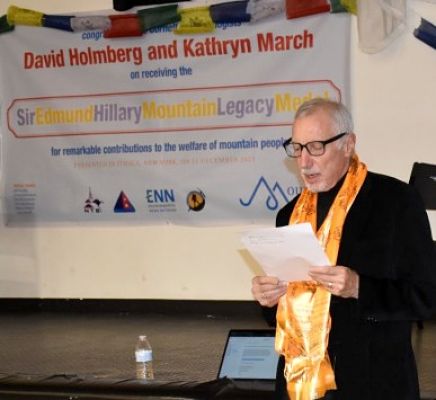
It is a pleasure and introduction to introduce this year’s recipients of the Sir Edmund Hillary Mountain Legacy Medal, Drs. Kathryn March and David Holmberg. They display the best of scholarship, service and commitment to and solidarity with the Tamang mountain communities where they have worked, as well as in Nepali society for close to fifty years. As scholars they have contributed path-breaking research, trained some of the best minds of the next generation of anthropologists and contributed to the institutional development of social science and women’s studies at Tribhuvan University and Padma Kanya College, and a host of women’s development programs. Their Cornell-Nepal Study Program was unique in study abroad programs in its bi-directional exchange of students to and from Nepal, and in being sustained for a remarkable 25 years. Having myself re-established the University of Wisconsin Year in Nepal Program in 1981, I can appreciate the effort that went into this extraordinary achievement that has been of such value to so many people in the US and Nepal. I also have to recognize their tireless effort to assemble resources to produce innovative, environmentally appropriate structures in Nepal after the earthquake which is a legacy of note itself. These are but a brief description of a handful of the many contributions they have made to life in the Himalayas and in Nepal.
Although their strictly academic achievements are not directly material to the Hillary Medal, I feel compelled (as an anthropologist myself) to comment on David's and Kathryns’ scholarship on Nepal and their contributions to anthropology in general. Their studies on Tamang society, culture, history, gender relations and experience, and political identity have aimed to honor, preserve, and demonstrate the inner world and productive dynamism of Tamang society. David and Kathryn’s study of the relationship of the Tamang to the Nepali state expose the unacknowledged history of the struggle, resistance, and agency of an excluded people who were, nonetheless, important to the formation of the Nepali state. David’s insightful study of the re-emergent Llochhar ceremonies show the productive and transformative power of Tamang culture and ritual to forge social identities and an extensive polity within the contemporary Tamang and Nepali society, and with international Tamang communities.
In her monograph If each comes halfway: Meeting Tamang women in Nepal Kathryn captures the poetry and texture of Tamang women’s lives, in their own words, but also in a necessarily co-created conversation that transparently and reflexively engages in an ethnographic process, that moves beyond the confining templates and categories of social science to capture what really matters to the lives of Tamang women. It’s a beautiful gateway into the Tamang world.
There’s so much more to appreciate in Kathryn and David’s contributions. Yet, the acclaim and recognition of their work in this award attest to a legacy worthy of Sir Edmund Hillary and the mountain people he loved. It is hard to imagine candidates more deserving of the Sir Edmund Hillary Mountain Legacy Medal than Kathryn March and David Holmberg.
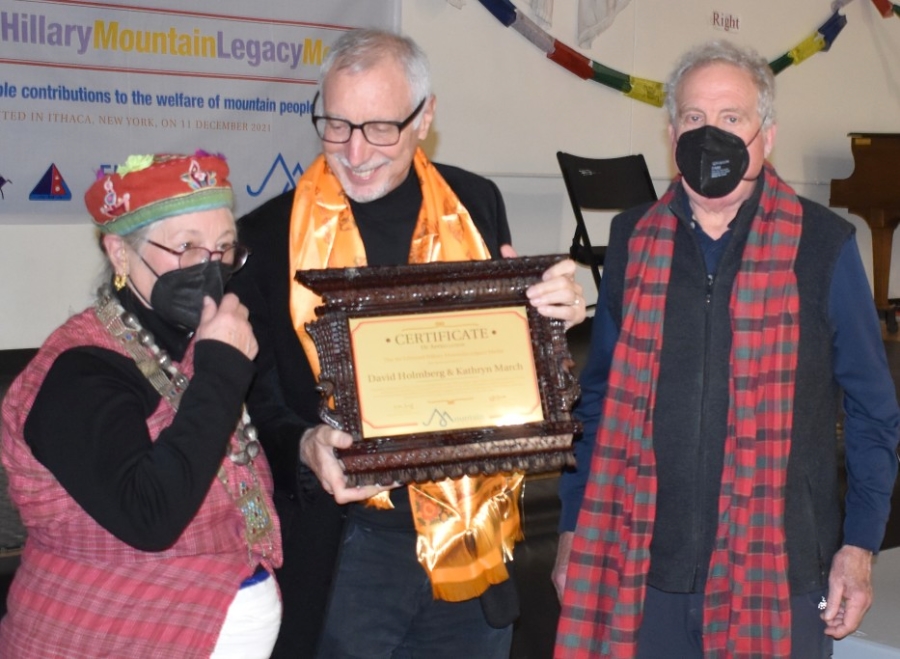
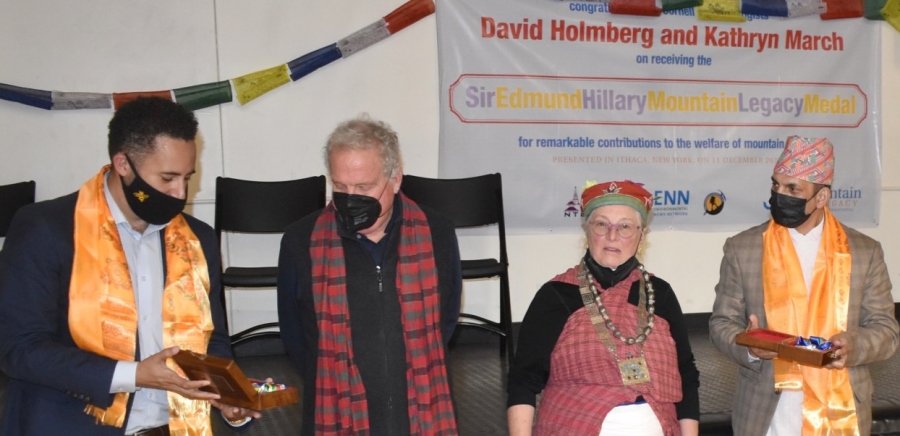
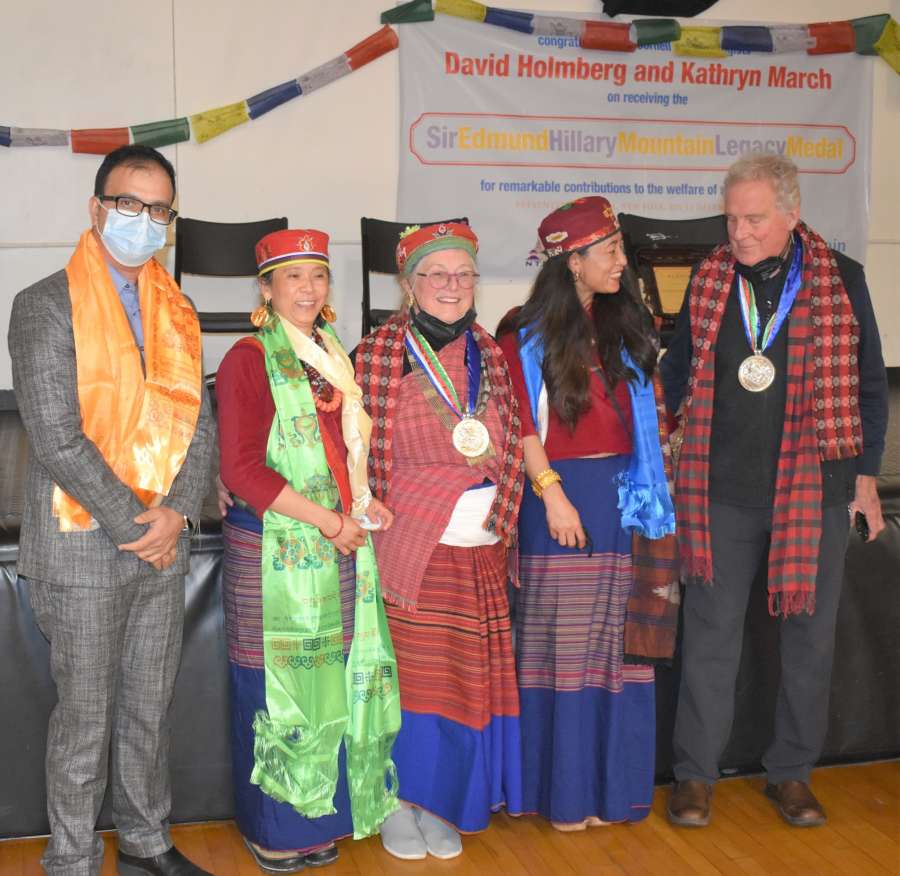
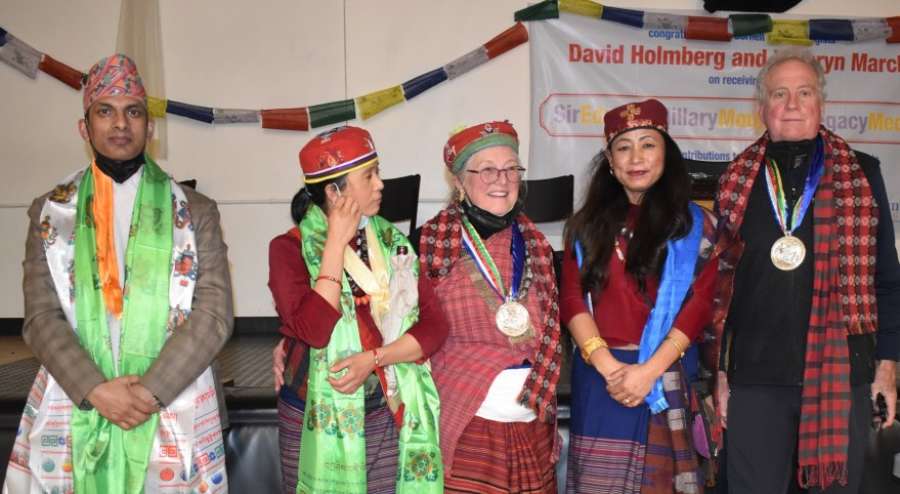
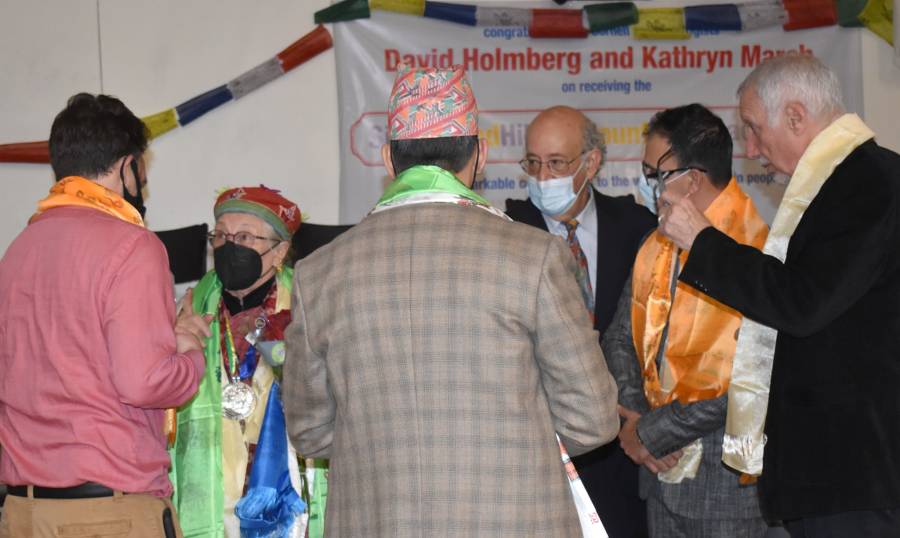

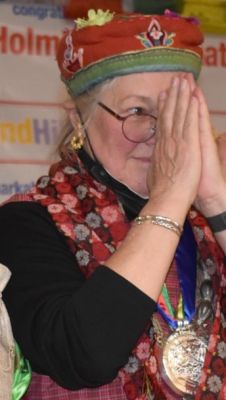
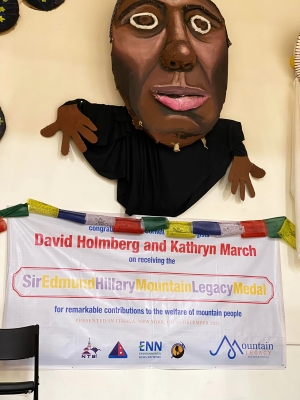
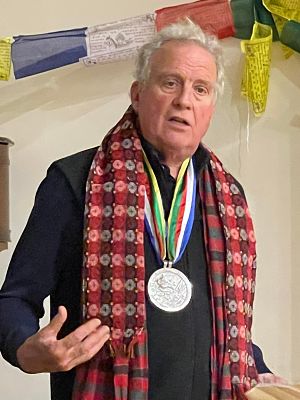
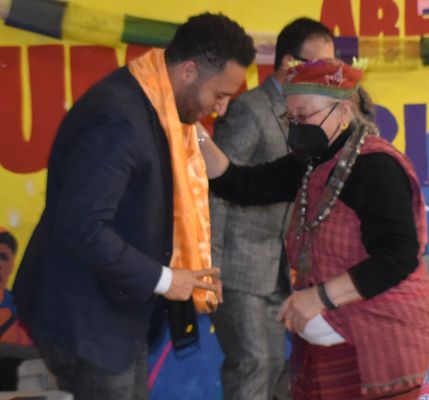
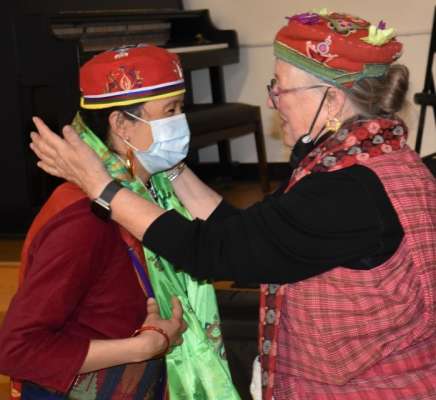
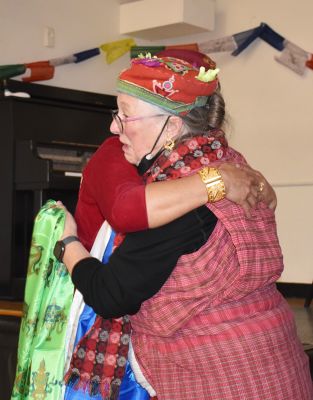
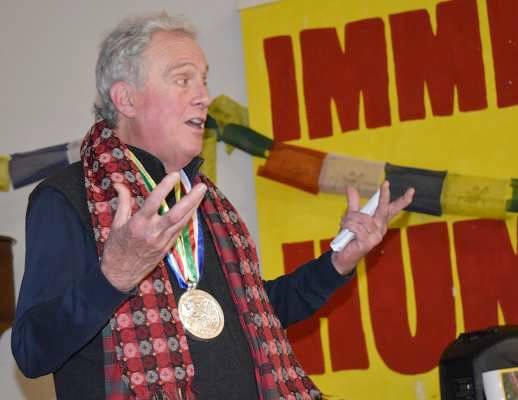
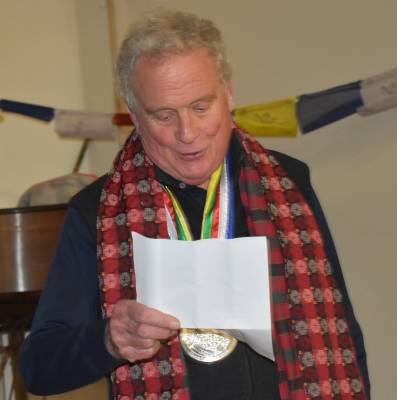
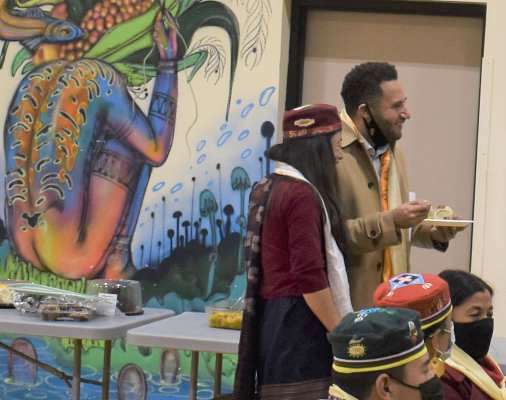
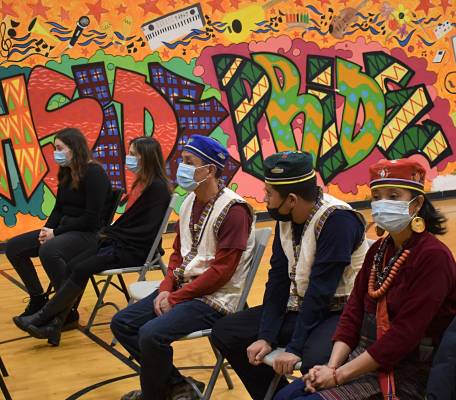
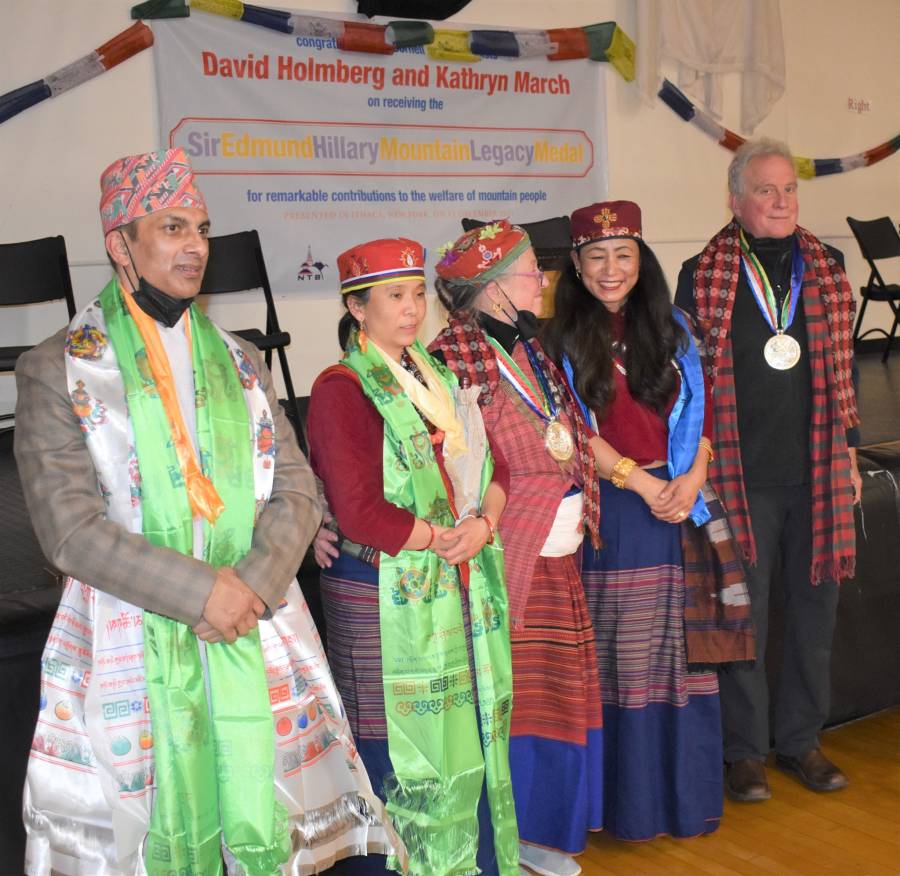
|
Home
Please Support the Sir Edmund Hillary Mountain Legacy Medal |